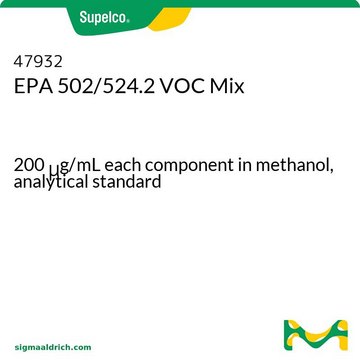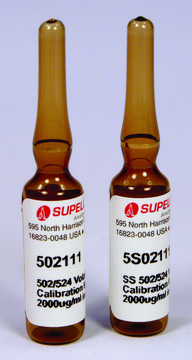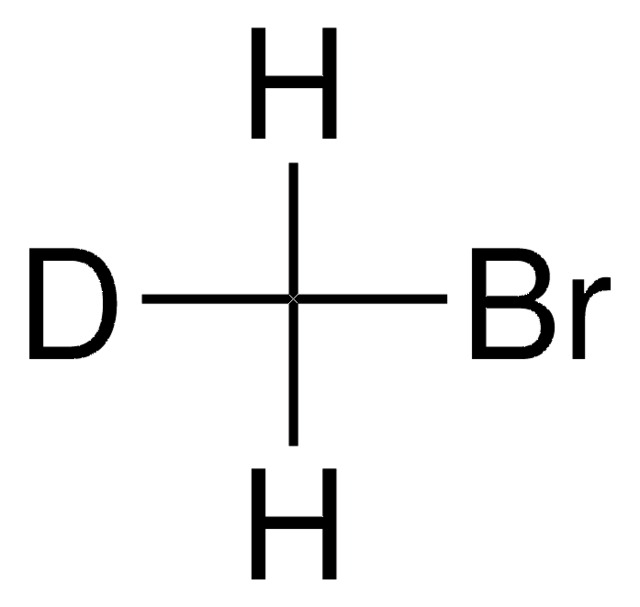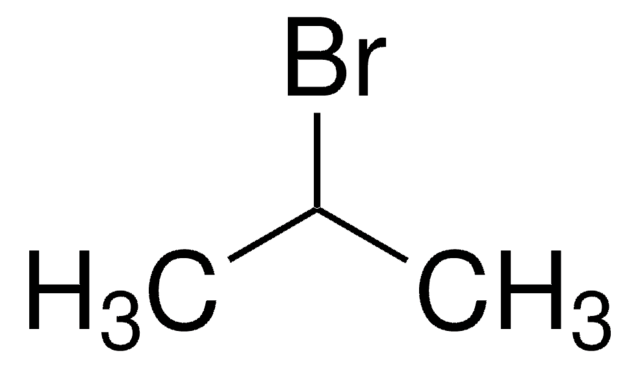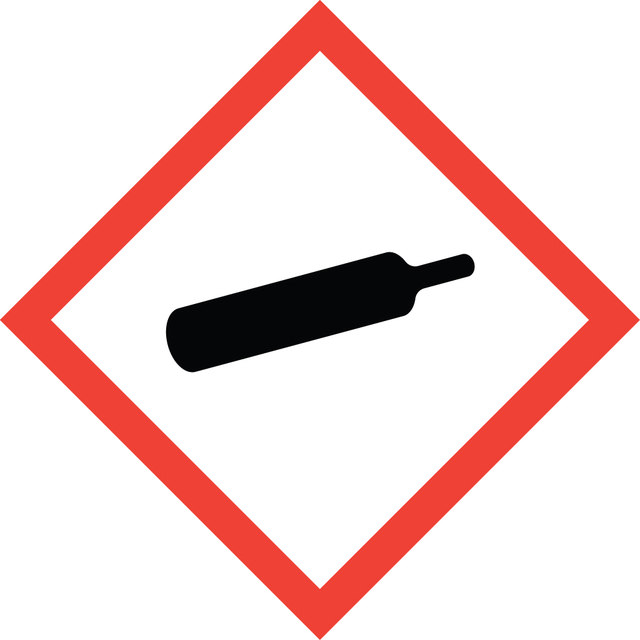65950
Bromomethane
purum, ampule, ≥99.5% (GC)
Synonym(s):
Methyl bromide
About This Item
Recommended Products
vapor density
3.3 (20 °C, vs air)
vapor pressure
1420 mmHg ( 20 °C)
grade
purum
Assay
≥99.5% (GC)
autoignition temp.
996 °F
quality
ampule
expl. lim.
~16 %
bp
4 °C (lit.)
mp
−94 °C (lit.)
density
1.73 g/mL at 20 °C
3.3 g/mL at 25 °C (lit.)
SMILES string
O[C@H]1[C@@H](O)[C@H](N2C=NC(C(N)=O)=C2N)O[C@@H]1COP(O)(O)=O
CBr
InChI
1S/CH3Br/c1-2/h1H3
InChI key
GZUXJHMPEANEGY-UHFFFAOYSA-N
Looking for similar products? Visit Product Comparison Guide
Other Notes
Signal Word
Danger
Hazard Statements
Precautionary Statements
Hazard Classifications
Acute Tox. 2 Dermal - Acute Tox. 3 Inhalation - Acute Tox. 3 Oral - Aquatic Acute 1 - Aquatic Chronic 1 - Eye Irrit. 2 - Muta. 2 - Ozone 1 - Press. Gas Liquefied gas - Skin Irrit. 2 - STOT RE 2 - STOT SE 3
Target Organs
Central nervous system, Respiratory system
Storage Class Code
2A - Gases
WGK
WGK 3
Flash Point(F)
<-22.0 °F - liquid
Flash Point(C)
< -30 °C - liquid
Personal Protective Equipment
Regulatory Information
Choose from one of the most recent versions:
Certificates of Analysis (COA)
It looks like we've run into a problem, but you can still download Certificates of Analysis from our Documents section.
If you need assistance, please contact Customer Support.
Already Own This Product?
Find documentation for the products that you have recently purchased in the Document Library.
Our team of scientists has experience in all areas of research including Life Science, Material Science, Chemical Synthesis, Chromatography, Analytical and many others.
Contact Technical Service

